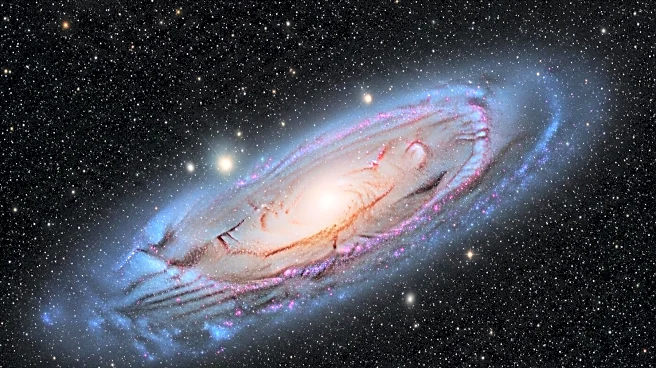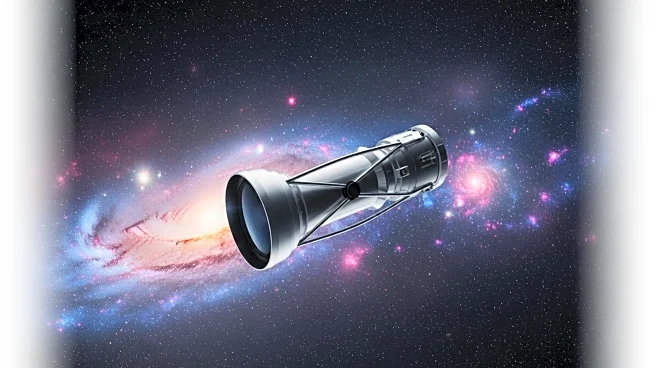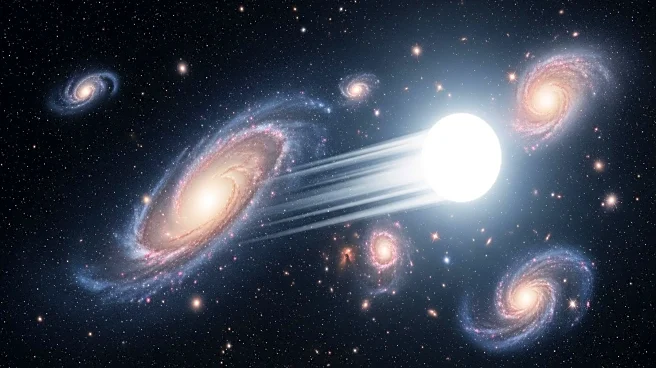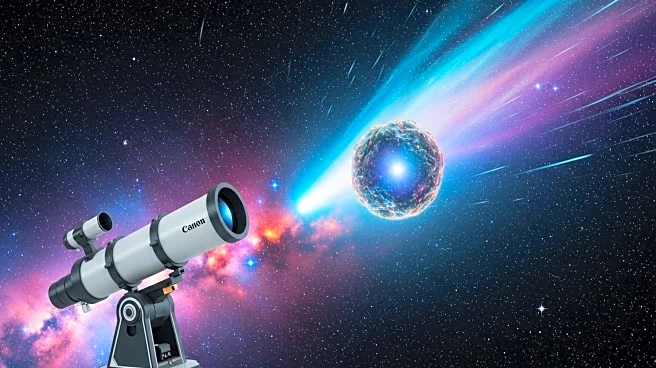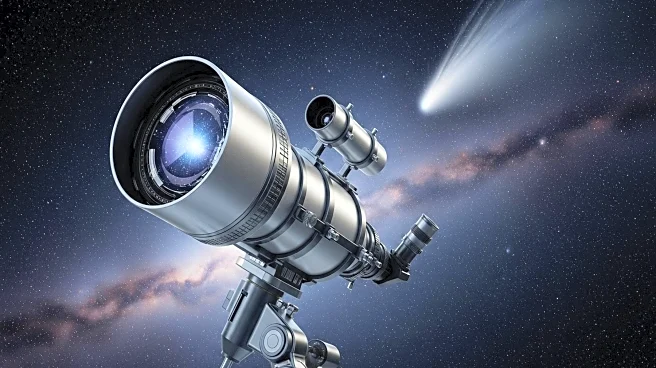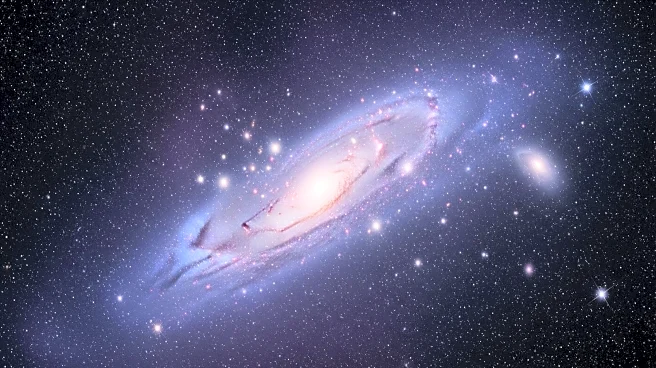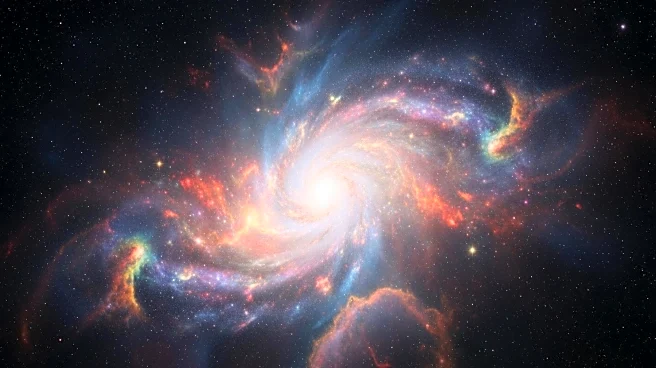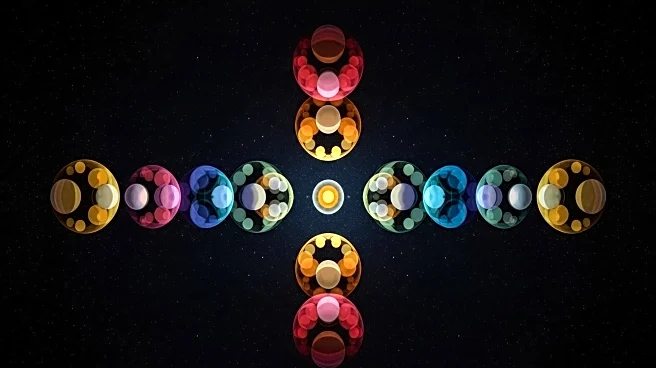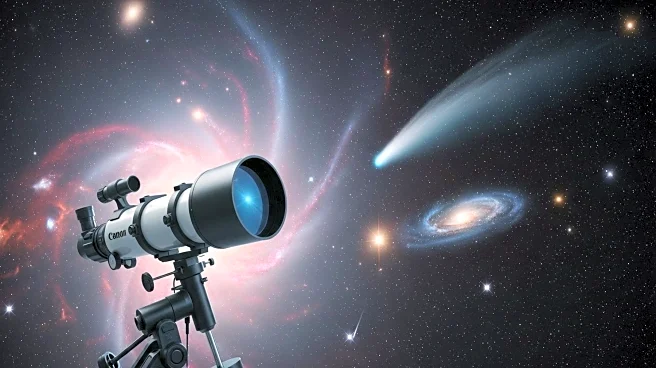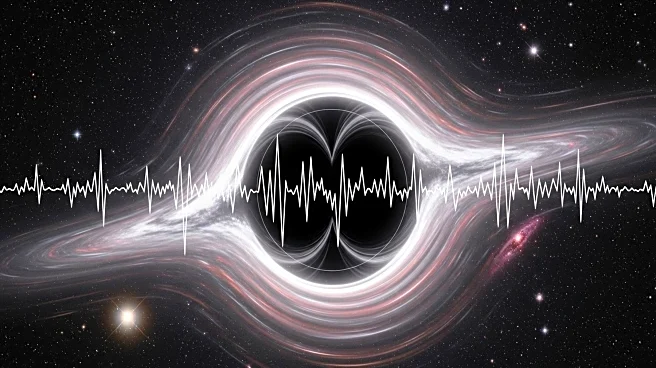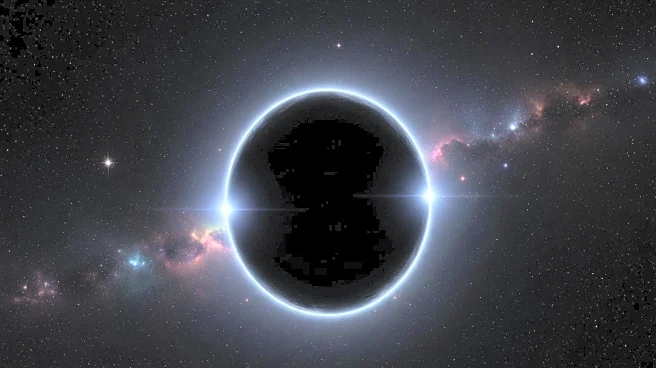What's Happening?
The Hubble Space Telescope, a joint project of NASA and the European Space Agency (ESA), has captured a new image of the spiral galaxy Messier 96, located 35 million light-years away in the constellation Leo. This galaxy is noted for its asymmetric appearance, which is believed to be the result of gravitational interactions with neighboring galaxies. The latest image incorporates data from ultraviolet, near-infrared, and visible light observations, providing a comprehensive view of the galaxy's structure and star formation processes. Previous images from 2015 and 2018 have been enhanced with additional wavelengths, revealing the uneven distribution of gas and dust, as well as the off-center core of Messier 96. The new data highlights regions of ionized hydrogen and nitrogen, which are crucial for understanding the conditions under which stars form within the galaxy.
Why It's Important?
This new image of Messier 96 offers significant insights into the processes of star formation and the environmental conditions within galaxies. By analyzing the ionized hydrogen and nitrogen, astronomers can better understand the rate of star formation and the properties of interstellar gas. This information is vital for determining whether Messier 96 is a starburst galaxy or one with an active galactic nucleus. The findings contribute to the broader understanding of galactic evolution and the role of gravitational interactions in shaping galaxies. Such research has implications for the study of galaxy formation and the lifecycle of stars, which are fundamental to the field of astrophysics.
What's Next?
Astronomers will continue to analyze the data from the Hubble Space Telescope to further explore the star formation processes in Messier 96. The focus will be on understanding how stars form within giant dusty gas clouds and how these stars influence their surrounding environments. Future observations may also aim to identify other galaxies with similar characteristics to Messier 96, providing a comparative analysis that could enhance the understanding of galactic dynamics and evolution.
Beyond the Headlines
The study of Messier 96 and similar galaxies can offer deeper insights into the cosmic phenomena that govern the universe. Understanding the interactions between galaxies and the resulting structural changes can shed light on the history and future of our own galaxy, the Milky Way. Additionally, the research may influence theoretical models of galaxy formation and evolution, potentially leading to new discoveries about the universe's large-scale structure.
